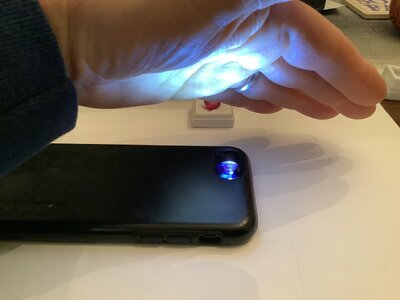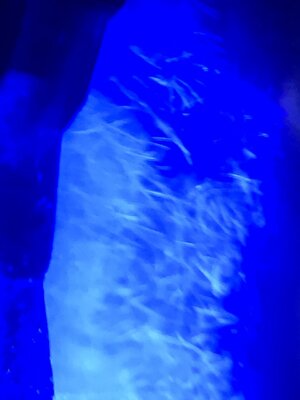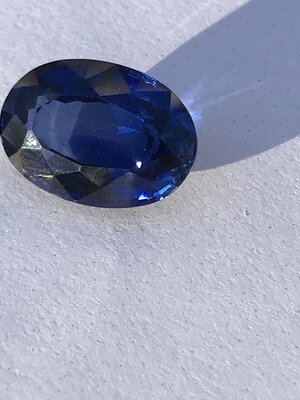westwoodguy
Rough_Rock
- Joined
- Dec 16, 2021
- Messages
- 7
Hi all,
I new to this forum and was wondering if someone could help me identify what this sapphire is. I am new to gemstones so please don’t laugh at the tests and comments I’ll be posting as it is just what I could find on line. I know that the right way to identify this is to take to a gemologist but not interested in paying $100+ at this point as I have my doubts gem is natural so not worth it. I tested the stone with a diamond tester and it tests 8-9, then I placed it on cell phone light only to see what is shown in pic attached. I viewed under a loupe and cannot find a similar picture of what I am seeing anywhere so was hoping maybe someone here could help with. I see (try to best describe this as I don’t think my picture is best) what to me appears to be several white fiberglass strands along with a sort of cloudy with really small bubbles. I also see straight lines on what appears to be the facets that everywhere on line says is indication of lab grown but to me it appears on surface almost like marks from polishing.
I am being told this is natural with “Heating with reside means these gems are heated in vacum chamber in presense of argon gas and powder to avoid breaking of gems during treatment process”.
Are pictures clear enough to tell what this is?

I new to this forum and was wondering if someone could help me identify what this sapphire is. I am new to gemstones so please don’t laugh at the tests and comments I’ll be posting as it is just what I could find on line. I know that the right way to identify this is to take to a gemologist but not interested in paying $100+ at this point as I have my doubts gem is natural so not worth it. I tested the stone with a diamond tester and it tests 8-9, then I placed it on cell phone light only to see what is shown in pic attached. I viewed under a loupe and cannot find a similar picture of what I am seeing anywhere so was hoping maybe someone here could help with. I see (try to best describe this as I don’t think my picture is best) what to me appears to be several white fiberglass strands along with a sort of cloudy with really small bubbles. I also see straight lines on what appears to be the facets that everywhere on line says is indication of lab grown but to me it appears on surface almost like marks from polishing.
I am being told this is natural with “Heating with reside means these gems are heated in vacum chamber in presense of argon gas and powder to avoid breaking of gems during treatment process”.
Are pictures clear enough to tell what this is?










300x240.png)